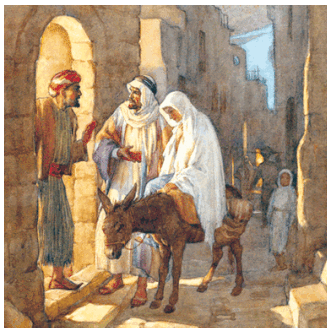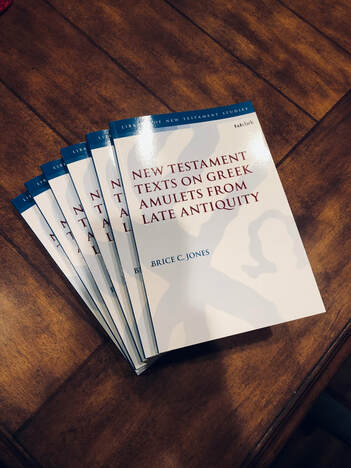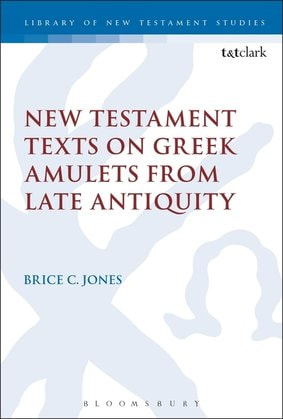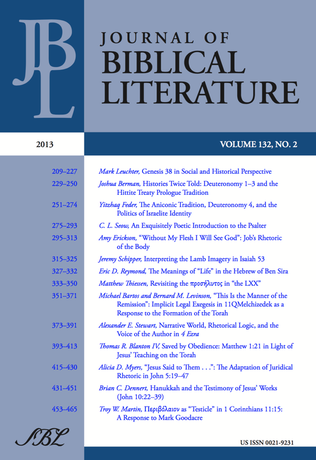 Since Christmas is quickly approaching, I want to point my readers, as I do every year, to a fantastic article by Stephen Carlson published in the journal New Testament Studies in 2010 titled, "The Accommodations of Joseph and Mary in Bethlehem: Κατάλυμα in Luke 2.7." Carlson's study turns the traditional interpretation of the "inn" as being a kind of ancient hotel on its head. He also denies the view that Jesus was born in a stable or barn. Through a detailed lexical and semantic analysis of κατάλυμα (Greek word traditionally translated as "inn") and Jewish patrilocal marital customs during the time of Jesus, Carlson demonstrates that the reference to κατάλυμα in Luke 2.7 alludes to a marital chamber built on top, or onto the side of, the main room of a family village home. According to Carlson, the phrase διότι οὐκ ἦν αὐτοῖς τόπος ἐν τῷ καταλύματι should be rendered "because they did not have room in their place to stay." The reference to "their place" is the marital chamber attached to the family village home of Joseph where the married couple would have stayed for some time before finding their own place. Since there was no space in their room, Mary had to give birth in the larger main room of the house, where the rest of the family slept. Carlson also shows that it was common for a "manger" to be present in the main room of most Jewish homes and so this detail of the birth account is in keeping with Jewish living customs. I quote Carlson's conclusion found on page 342 of the article: "Luke's infancy narrative therefore presupposes the following events. Joseph took his betrothed Mary from Nazareth to Bethlehem (2.5). Bethlehem was his hometown (v. 3) and, in accordance with the patrilocal marital customs of the day, it must also have been the place where they finalized their matrimonial arrangements by bringing her into his home. As a newly married man, he no longer would have to sleep in the main room of the village house with his other relatives, but he and his bride could stay in a marital chamber attached to the house until they could get a place of their own. They stayed there for some time until she came to full term (v. 6), and she gave birth to Jesus in the main room of the house rather than in her marital apartment because it was too small, and she laid the newborn in one of those mangers (v. 7) common to the main room of an ancient farmhouse. After staying at least another forty days in Bethlehem (v. 22; cf. Lev 12.2–8), Joseph and Mary eventually moved to Nazareth to make their home together in her family's town (v. 39; cf. 1.26–27). To be sure, this scenario as presupposed in Luke's infancy account diverges greatly from the conventional Christmas story. There is no inn, no innkeeper, and no stable. But it is grounded in a careful exegesis of the text." This is one of those articles that can be described as truly being groundbreaking. Carlson's conclusions are so convincing that it would take considerable evidence to overturn them. Indeed, some may be uncomfortable with how this evidence changes the face of the traditional Christmas story and it does throw a wrench in how manger scenes are reenacted every year. But this interpretation is, as Carlson admits, "grounded in a careful exegesis of the text." This article needs to be circulated widely, not only among academics, but also pastors and lay people alike, because it has serious implications for how we should understand this story as told by Luke. Carlson has posted this article on his personal website and it can be found here. Happy reading and happy holidays to all!
0 Comments
I was recently asked to contribute an article on the "first-century" Mark fragment (P.Oxy. 83.5345) in the journal Early Christianity. Toward the end of that published piece, I wrote:
"There is one important question that remains unanswered regarding this papyrus. Despite the EES’s statement to the contrary, why have multiple people, including Steve Green, president of Hobby Lobby and the Green Collection’s benefactor, admitted that the Oxyrhynchus Mark papyrus was for sale at some point?" It is now fairly evident that “first century” Mark was offered for sale. Please see the THIS blog post by my colleague, Brent Nongbri, who relays breaking e-mail correspondence from Mike Holmes. Essentially, if the allegation in the e-mail is true, it indicates that an Oxford professor (Dirk Obbink) intentionally tried to sell papyri belonging to the Egypt Exploration Society (EES) to the Green Collection. This is not to be taken lightly. I am very curious to see what actions the EES will take here. It seems altogether criminal, in my opinion. This is a sad state of affairs indeed, but a conclusion (if proven true) that many have already drawn. This news is part of a much larger web of conversation and debate around the manuscript acquisitions of the Green Collection, which I have posted about here, here, here, and here. The Detroit Bookfest did an exclusive interview with Dr. Brendan Haug, archivist at the University of Michigan Papyrology Collection. Readers of this blog should be interested in this article/interview, which can be accessed here. There are some great pictures included int he piece. Brendan is a great archivist and has provided tremendous assistance to me as a researcher over the last several years. I visited the collection in 2017, which you can read all about here!
It's been a while since I've posted and so I thought I would include a few updates (=personal plugs) here. Back in the fall, I accepted an invitation to submit an article for a special issue of Early Christianity, whose theme is "Oxyrhynchus." I wrote a brief overview of P137, widely known as the "first century" Gospel of Mark....that is not from the first century! So many things could be said about this little fragment but I only scratch the surface in a few pages. It is forthcoming in the first issue of vol. 10 of the journal.
 Last but not least, I am very happy to announce that my book on amulets has just appeared in paperback; I received my first copies today from the press (Bloomsbury). There are three differences from the hardback published in 2016: 1) a few corrections were made, 2) the images of papyri are converted to black and white, and 3) it's about $100 cheaper! So, now is the time to go BUY ONE...HERE. I had several kind invitations to submit my manuscript to other publishers, but I am very happy with my decision to have my work published in the prestigious Library of New Testament Studies series. The book has been reviewed many times already in the field, and the reviews have been overwhelmingly positive. The book has been cited in several books and articles; I'm just glad that people are reading it and finding something to take away from it. If nothing else, get it for the pretty pictures of papyri, which pop in color in the hardback version. (Please excuse the self-blurbing in this post!) |

Available at Amazon!
Archives
December 2020
Categories
All
|

